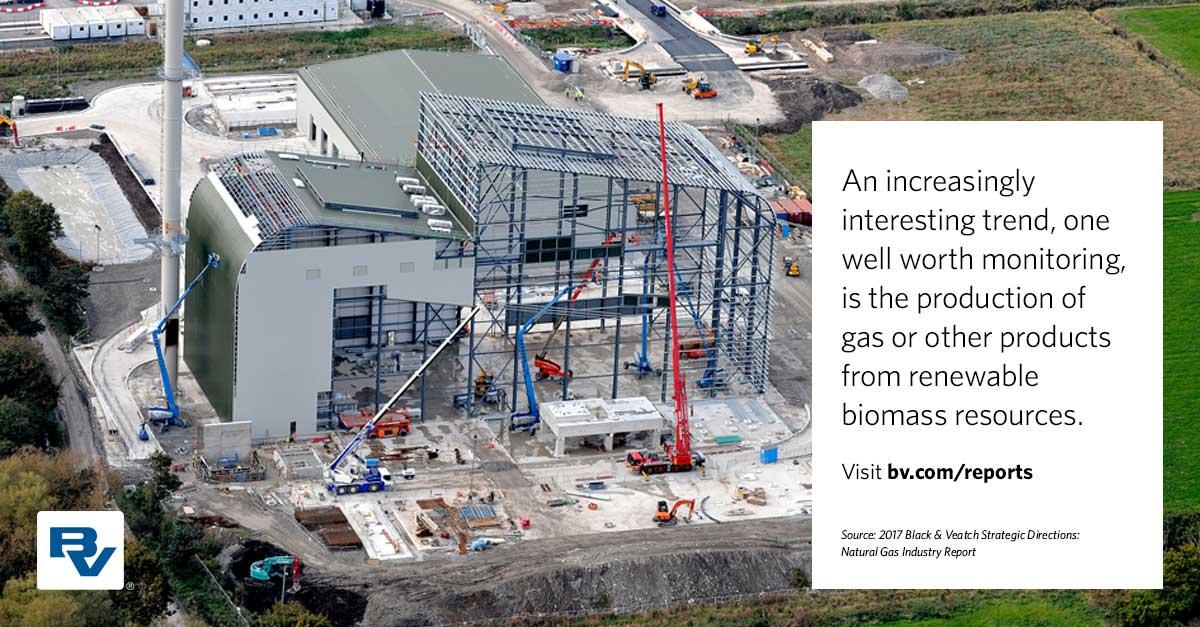Economics Remain Driving Force for Downstream Sector Trends

Economics Remain Driving Force for Downstream Sector Trends
Lower gas prices are driving investment across the sector as the industry hedges its bets on market recovery. Continuing flat demand has caused a stalemate across the industry, and most natural gas utilities remain in waiting mode. Nevertheless, the industry is looking ahead. It is expecting demand to shift and prices to eventually rise, and utilities are working to keep their assets running and maintain the systems currently in place.
Download the 2017 Natural Gas Industry Report
Investing in Efficiency, Reliability
Many in the industry are taking advantage of this breathing room to analyze their systems and plan strategically for when the market recovers. Efficiency is a major focus; this year’s Strategic Directions: Natural Gas Industry Report survey results show that nearly half of respondents (47 percent) are considering increasing investments in this area to remain competitive when the market recovers. Focusing on aging assets and efficiency while prices are down is a wise move, especially for an industry where most domestic facilities were built in the late 1960s and early 1970s, and outdated infrastructure is a well-known challenge.
Reliability ranks second to efficiency, with 24 percent of respondents considering increasing investments in reliability to remain competitive. Increasing capacity ranked a close third, with 23 percent looking to expand their facilities, while 16 percent are looking to diversify production by expanding into other products that can be made from natural gas. Nearly one-third (31 percent) have no plans to invest in any of the above.
Strategies for Stranded Gas
Stranded gas — remote natural gas that has been discovered, yet remains inaccessible because of economic or logistical issues or pipeline standards — is a global issue. According to a 2013 U.S. Department of the Interior report, the estimated amount of stranded gas in gas fields alone totals 2,612 trillion cubic feet, with about 60 percent located in onshore stranded gas fields, and the remainder offshore. Companies, therefore, continue to invest in new ways to utilize and transport this abundant resource.
Survey results show that the industry sees building pipelines (32 percent) and investing in LNG (27 percent) as the most economical ways to move stranded gas. New pipeline infrastructure would be the most efficient and cheapest method to move gas a short distance, while LNG would be better for longer distances.
Advanced technologies such as gas-to-liquids (GTL) also offer a possible solution to monetize stranded gas. Ten percent of survey respondents see GTL as a viable option to move stranded gas. Granted, it requires a higher capital cost, but it would result in a higher value product. A similar number of respondents (9 percent) see methanol as the best option, while 6 percent consider flare, a process that increasingly is being restricted by regulations, to be the most economical.
Economics Drive Biomass Option
An increasingly interesting trend, one well worth monitoring, is the production of gas or other products from renewable biomass resources. Although the majority of respondents do not plan to use biomass resources, one-third (33 percent) say they are considering it. Of those respondents, approximately half see economics as the primary driver.
This is no surprise, given the Environmental Protection Agency’s (EPA’s) credit system. In 2005, the EPA mandated that fuel blenders add renewable fuels or purchase renewable identification numbers (RINs) on the open market. According to the EPA’s Renewable Fuel Standard (RFS) Program, RINs are credits used for compliance and serve as “the ‘currency’ of the RFS program.”
Similar to the carbon credit system, producers who do not meet this mandate have the option of purchasing a RIN from another producer. Biomass qualifies under this mandate, and it’s fair to estimate that up to 75 percent of the revenue from a gallon of renewable fuel could be derived from RINs.
The remaining respondents who are considering biomass see it as a potential solution to meeting internal sustainability goals and regulatory needs, while the remaining 4 percent see it as a valuable marketing and/or public relations initiative.
While traditional players are considering biomass, interest seems to be blossoming among project developers. Considering the benefits at hand — both economic as well as environmental — producers might be well served to weigh their options and consider diversification.

